Hermès Continues To Reinvent The Scarf
The Hermès Spring Summer 2021 Silk collection spotlights designs that relate unique stories and designers who bring their distinctive styles to each carré
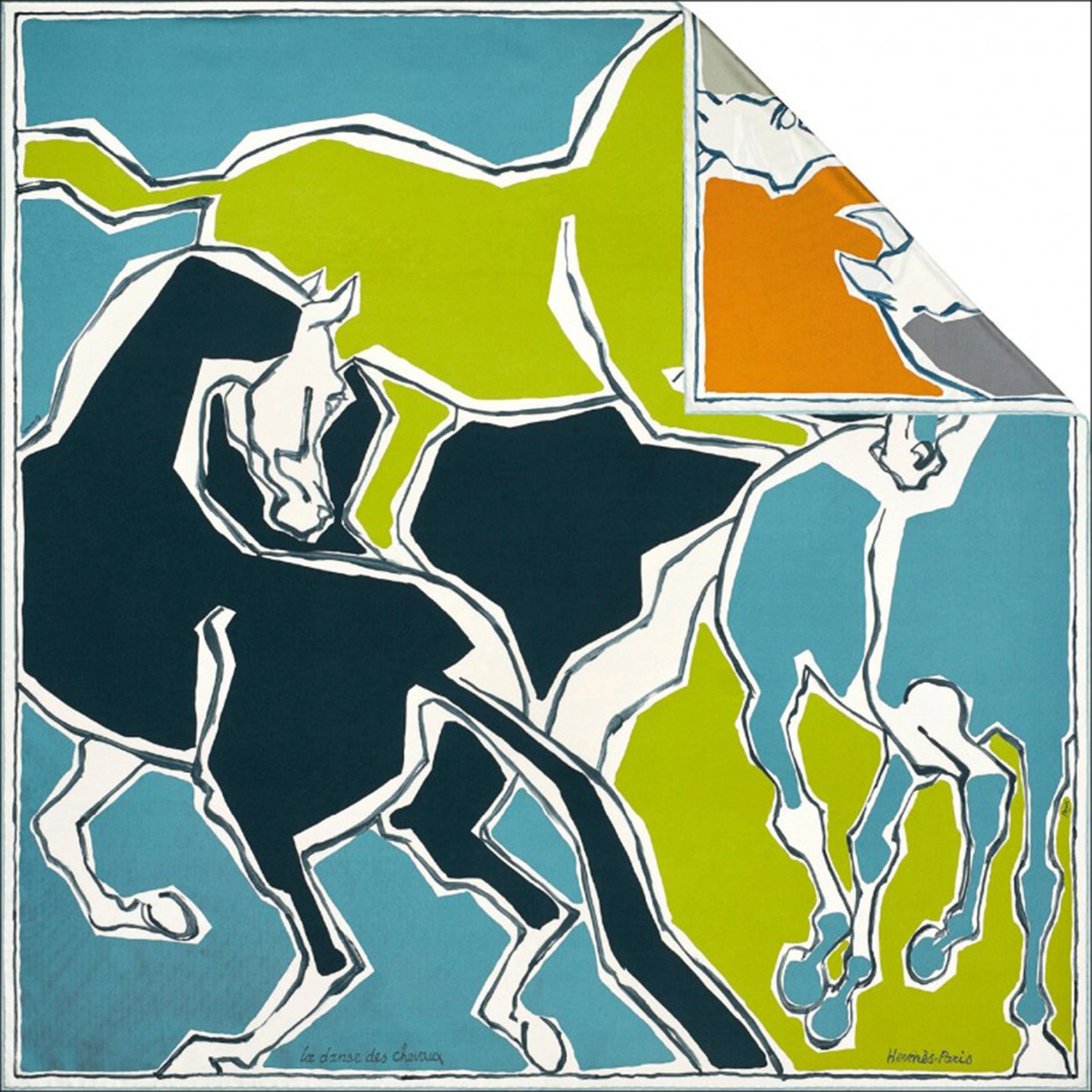
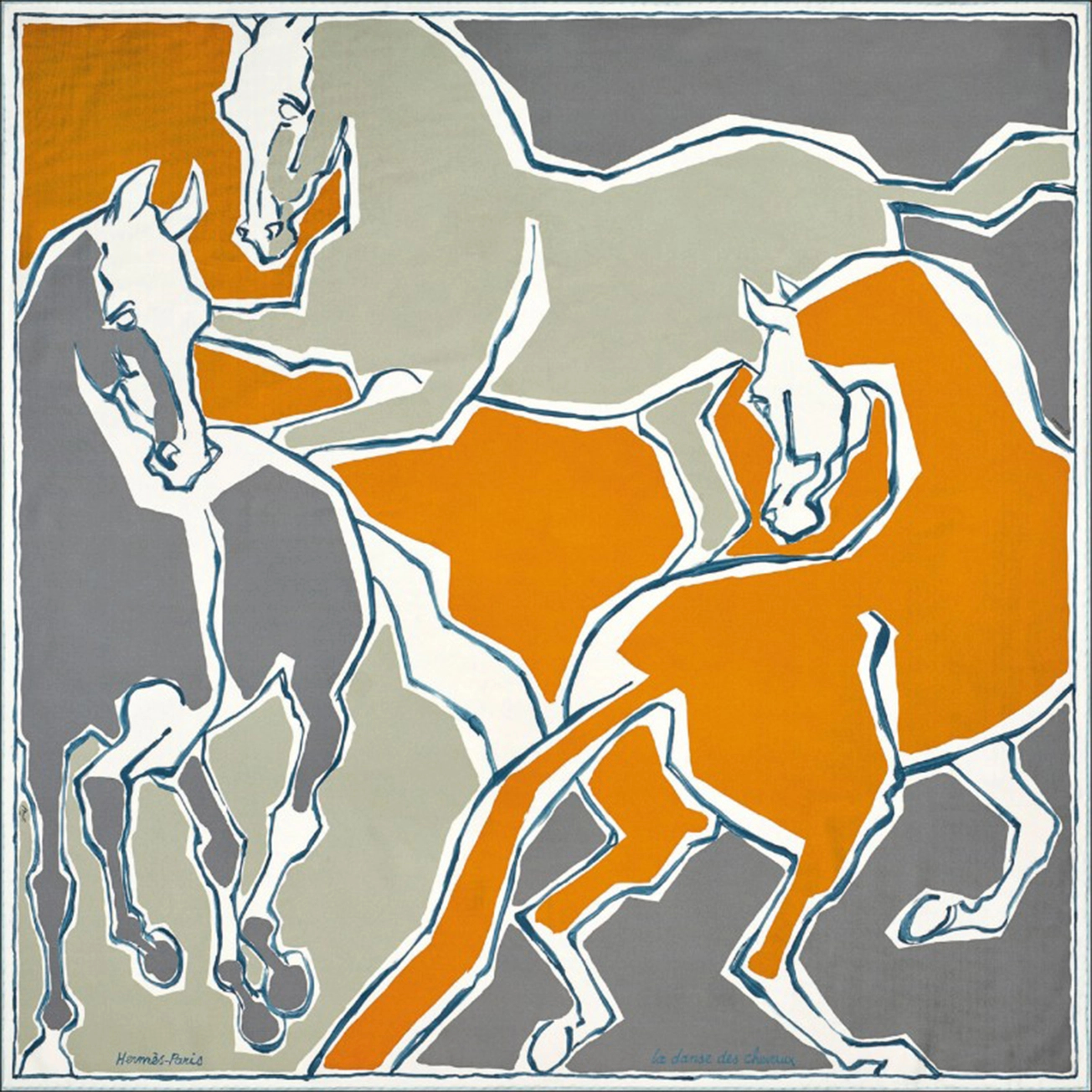
The scarf is hip again thanks in no small measure to the French luxury house Hermès. Since the brand’s first carré (French for square) or scarf rolled out in 1937, one hundred years after Hermès was founded in 1837, the brand has dedicated itself to keeping its most iconic accessory fresh and desirable for lovers of luxury. For instance, the shape of the classic 90 cms x 90 cms square has been innovated upon through the decades to include several avatars — bandanas, twillys, maxi-twillys, pareos, the giant triangle — while one of the newer renditions is a round scarf. Besides, the 19th-century French house has dedicated apps and videos that reveal a slew of techniques for knotting the silk. The Hermès scarf can brighten up the simplest silhouette, adding a pop of colour and a twist of contemporaneity to your outfit, hair, wrist or even your handbag. It can even double up as a dress or skirt. Most recently, an Instagram post of the fashion-forward Khushi Kapoor, Boney Kapoor’s youngest daughter and Bollywood aspirant, shows her in a purple, orange and yellow Hermès scarf repurposed as a blouse.
It is no wonder that this has been a most coveted accessory. The Hermès scarf has had its historical moments, captured in iconic images. Queen Elizabeth II is rarely seen without a headscarf from her beloved collection, tied regally under her chin against the finicky British weather. Jacqueline Kennedy Onassis made it particularly elegant worn around her neck. Audrey Hepburn, that icon of style, popularised it through films like Roman Holiday, knotted casually around her fabulously long neck or carelessly around her head. A never-to-be-forgotten image is that of Grace Kelly, Princess of Monaco, at one of Aristotle Onassis’ yacht parties, her broken arm tied in the most fashionable of slings — you guessed it, her Hermès scarf.
It would need more than celebrity, however, to recommend this piece of silk. Here are some facts that reveal it as one of the most carefully and meticulously created of accessories. Each scarf is separately hand-designed by artists and then individually screen-printed at the factory in Lyon. The process from visualisation for each scarf can take up to three years. There are up to 27 different colours on an average in each one, and the silk-screening process done by hand can take up to six months. The hems are all hand rolled and hand stitched and the actual manufacture of each scarf can take up to 18 months to complete. No wonder then that scarf lovers are forever on the lookout for limited editions, pre-loved and vintage pieces and amazing finds at auctions and in sales.
Living up to its reputation for innovation, elegance and amazing savoir faire, Hermès introduced the double-faced carré for the first time in the Spring Summer 2020 collection. In the making for 10 years and developed by Lyon’s craftsmen and textile engineers, this breakthrough in silk printing saw the merging of technology and fine craftsmanship to create delicate silk scarves printed separately on either side, something that was considered impossible even 10 years ago. The secret of its creation guarded by artisans, the double-faced scarf extends the possibilities of scarf wearing even further, augmenting colour choices in a single piece.
Each Hermès scarf has a tale to tell — with inspirations ranging from astronomy, equestrian stories, mythology, fantastical creatures, cartography and cartoons to flora and fauna, among others. These are told with humour sometimes, with whimsy at others, with a slash of colour or even in quiet monochrome. Young artists have, for some time now, been involved in the creation of newer designs, bringing modernity and increasing its appeal for younger generations of fashion lovers. The artists are picked from all over the world, and these are works of art in themselves — tie them around your neck as wearable art or frame them on a wall! It works either way. We hear that the designs that have not yet been used are stored in a large white box nicknamed “le frigo”, the refrigerator.
The Hermès Spring Summer 2021 Silk collection draws inspiration from many sources. This season pays tribute to the house’s equestrian roots, objects from the Émile Hermès collection, flora and fauna, and travel. The scarves, cashmere shawls and silk chiffons invite new formats, joyful designs and bold wearing styles. Emblematic know-how and graphic motifs combine to promise a summery, calm and feminine range.
Verve brings you the stories behind some of the finest carré designs from the Spring Summer 2021 Women’s Silk collection and introduces you to the designers…
La Danse des Chevaux
Design by Jean-Louis Sauvat
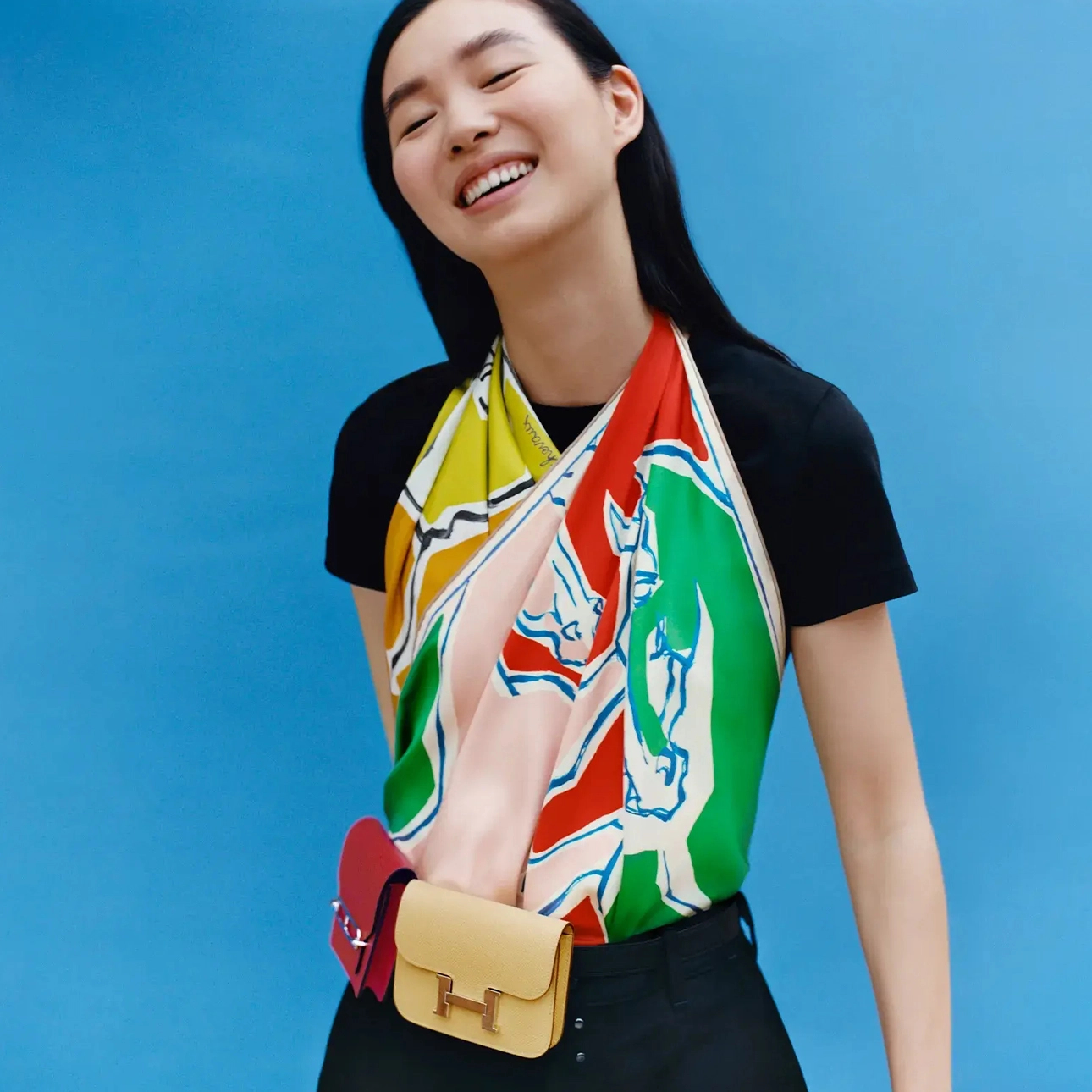
The dance of the horses! Equestrian-themed scarves from Hermès are a throwback to its very beginnings as a bridle and harness company for horses, and the house in fact continues to create saddles and accessories for riders.
Here, French sculptor and cartoonist Jean-Louis Sauvat, an experienced rider himself, celebrates his passion for dressage of the highest standards intended for adult horses. Three horses trot around in a graceful circle, creating rhythmic, fluid lines. The double-sided printing adds to the colour dimensions of this scarf.
L’instruction du Roy
Design by Henri d’Origny
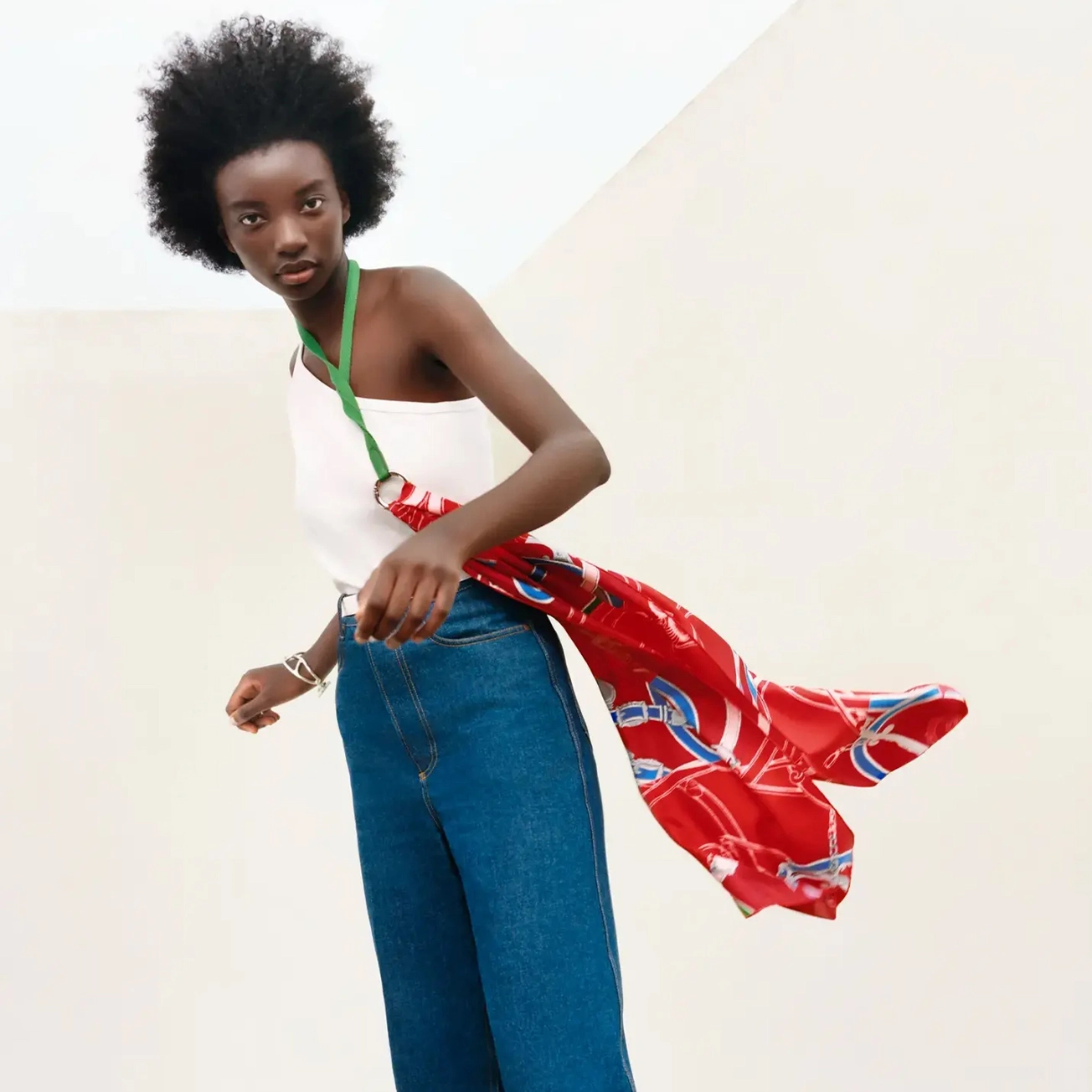
The inspiration for the design of this scarf comes from a series of plates at the end of L’instruction du roy en l’exercice de monter à cheval (Instructing the King in the art of horse-riding), written by one of the great French riding masters who also had a profound influence on modern dressage, Antoine de Pluvinel, equerry to Louis XIII.
The plates describe the types of bit recommended for use by Pluvinel, and Henri d’Origny’s design pairs these steel mouthpieces with braided fabric reins while the decorative scrolling fronds echo the fashions of Pluvinel’s time. Whether the fabric reins are a matter of design and juxtaposition or a statement on the fact that Pluvinel advised softer bits and humane training methods, only the artist can enlighten us. The artist’s rendition has been reworked in a bayadère style (a fabric design with horizontal stripes) with fine as well as wide block stripes.
Selle des Steppes
Design by Wlodek Kaminski
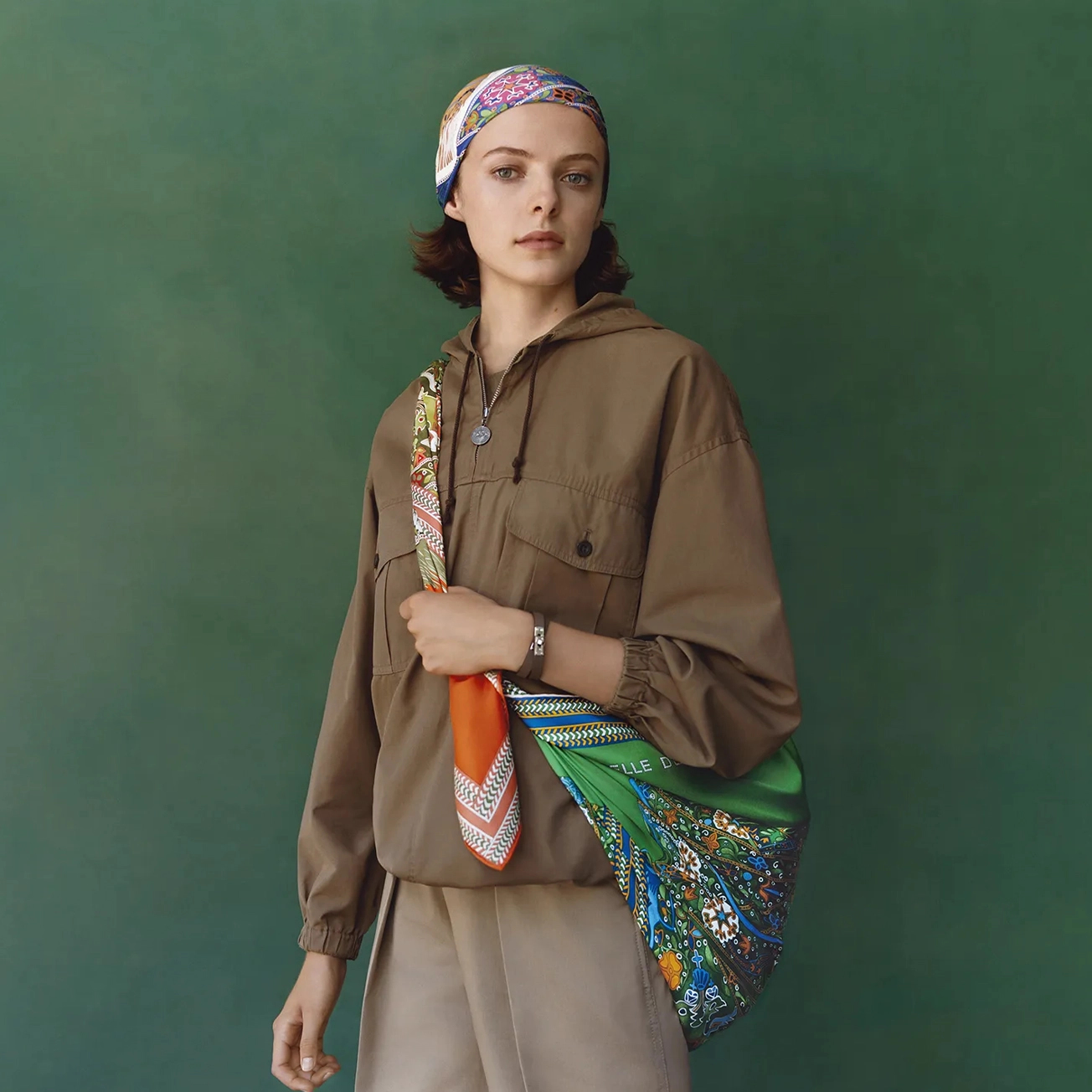
In silk twill, Wlodek Kaminski’s design has been inspired by a ceremonial saddle from late 19th-century Turkmenistan, conserved in the Emile Hermès collection which includes a personal selection of equestrian antiques. The high pommel skillfully riveted with fine horn plates, highlights an embroidered cushion and cover while the saddlecloth that covers the horse’s lower back during ceremonial occasions features a two-headed eagle, emblem of the Russian Empire and an abundance of floral motifs. Two crowned heads symbolise Europe and Asia, which formed part of the vast territory at the time.
Astrologie, Astronomie
Design by Françoise Faconnet and Gianpaolo Pagni
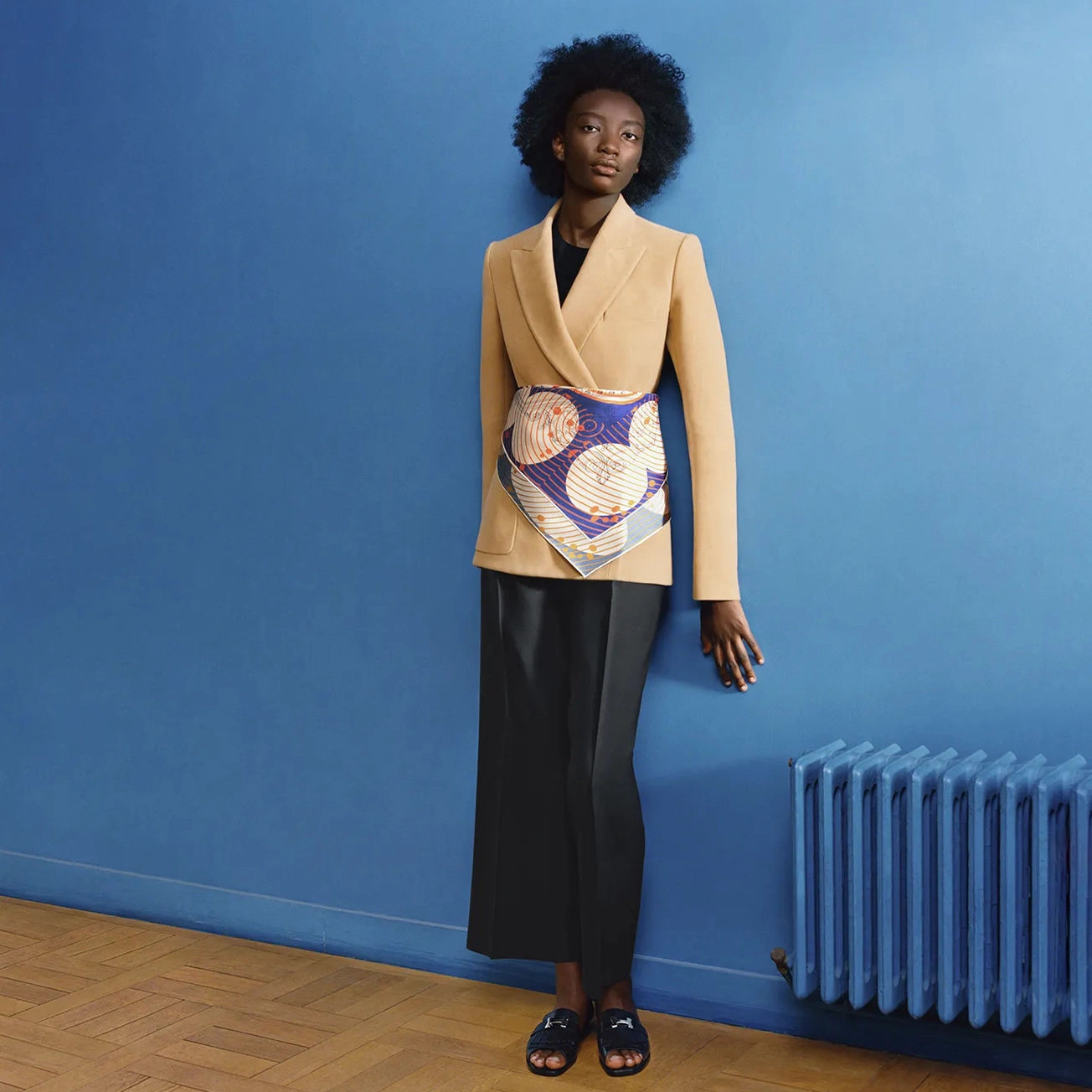
This double-face scarf, vibrant on one side and pastel on the other, may be considered Italian illustrator and painter Gianpaolo Pagni’s tribute to Françoise Faconnet’s 1963-designed scarf inspired by a Renaissance-era astrological table that has been conserved at the Paris Observatory. The illustrator who has been collaborating with Hermès for a while now and putting his designs on towels, blankets, wallpaper and rugs as well, uses stamps, the age-old printing implements, to compose his artworks.
Here, he reappropriates Faconnet’s original design by adding stamped motifs, the geometric prints overlapping with complex symbols that would be hard to decipher.
Prêt-à-porter
Design by Gianpaolo Pagni
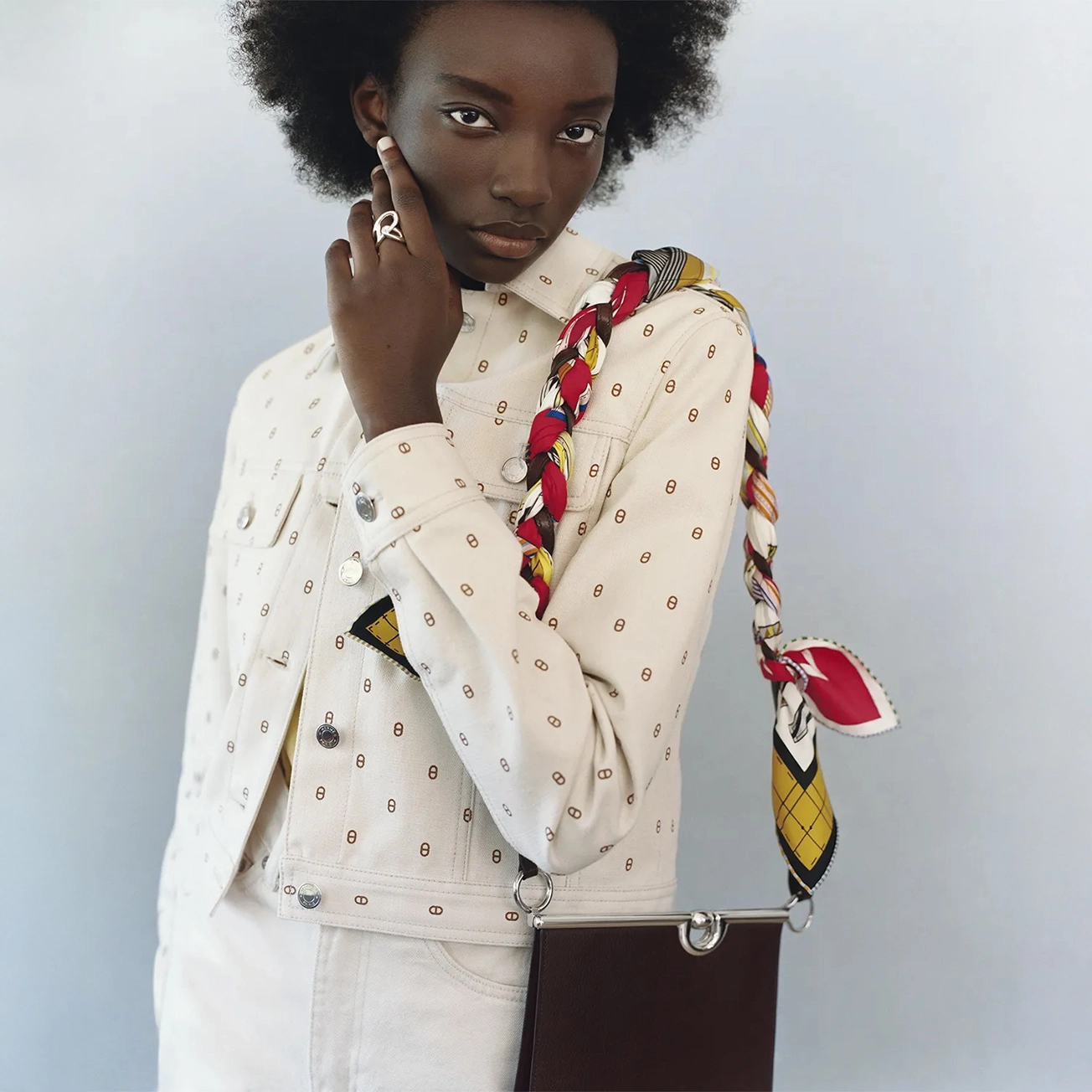
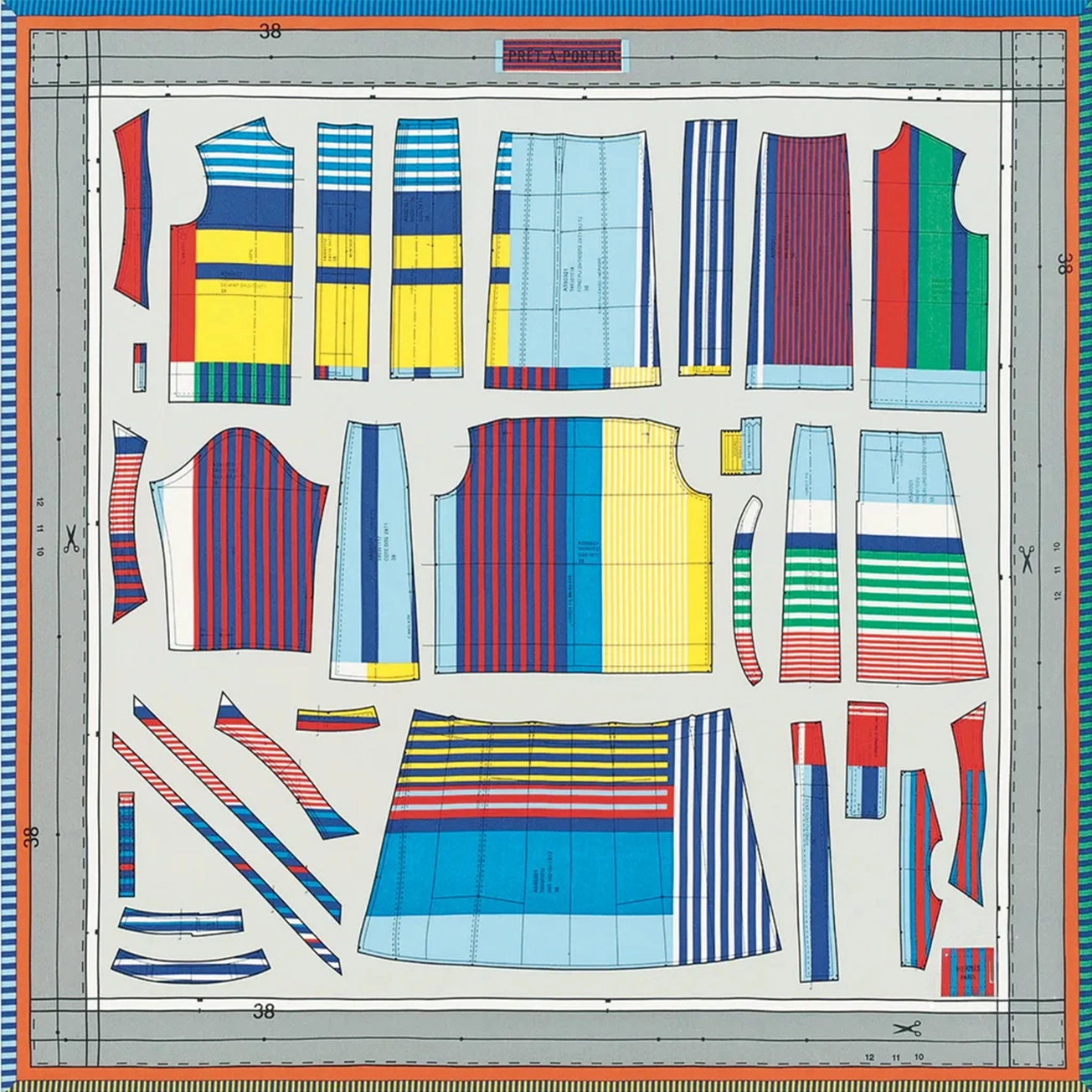
In this vintage silk carré, the Italian illustrator is inspired by Hermès ready-to-wear pieces, evoking patterns from fashion magazines of yore. As also by cut-out clothes for paper dolls, a thing of the past. “His work focuses on the dimension linked to memory and trace, using motif and repetition to bring to light a personal archaeology, a form of endlessly renewed self-portraits”, states his website. Here, “motif and repetition” create more than design, they trigger the memory.
Écharpe Spaghetti
Design: Incorporating gavroches by Leigh Cooke and Virginie Jamin
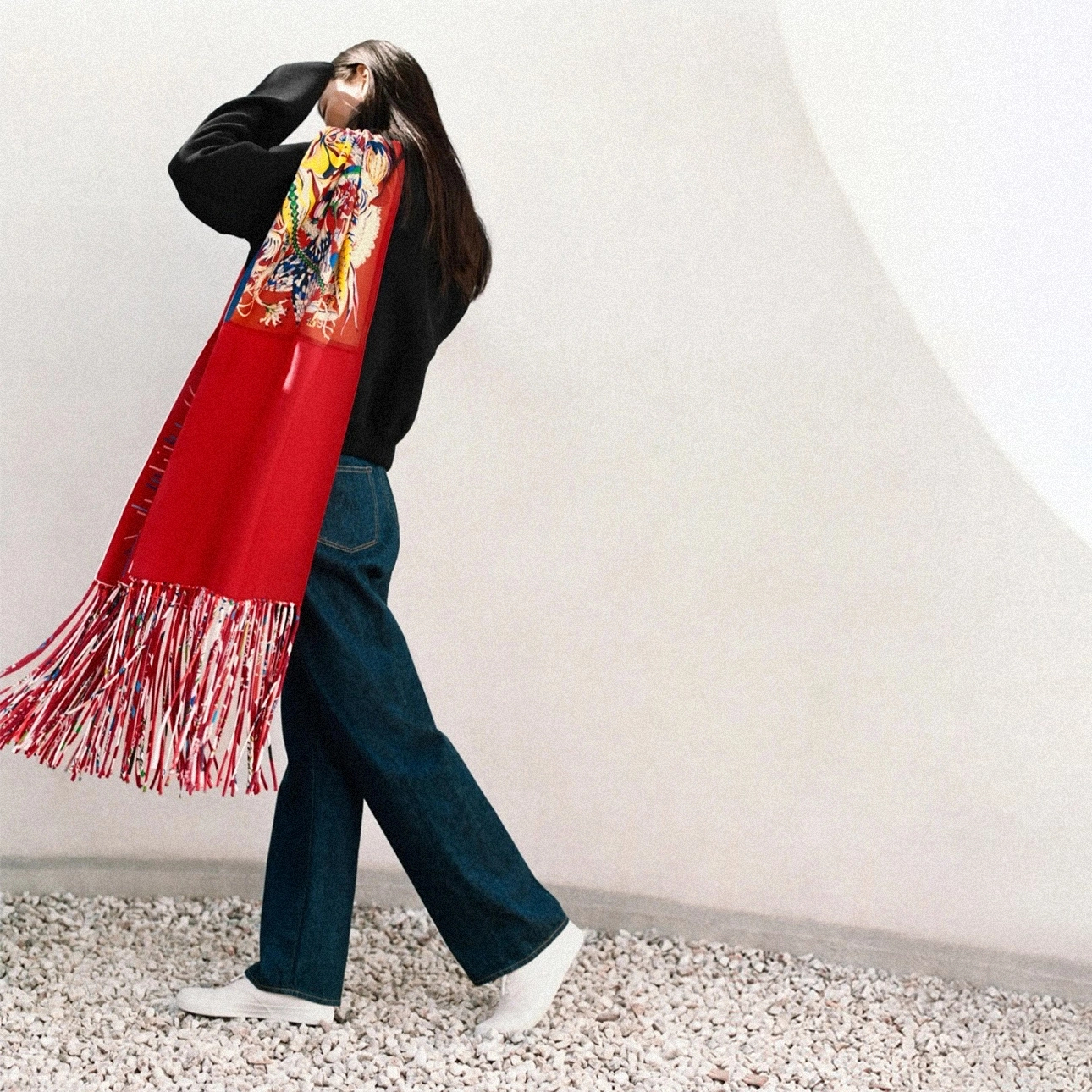
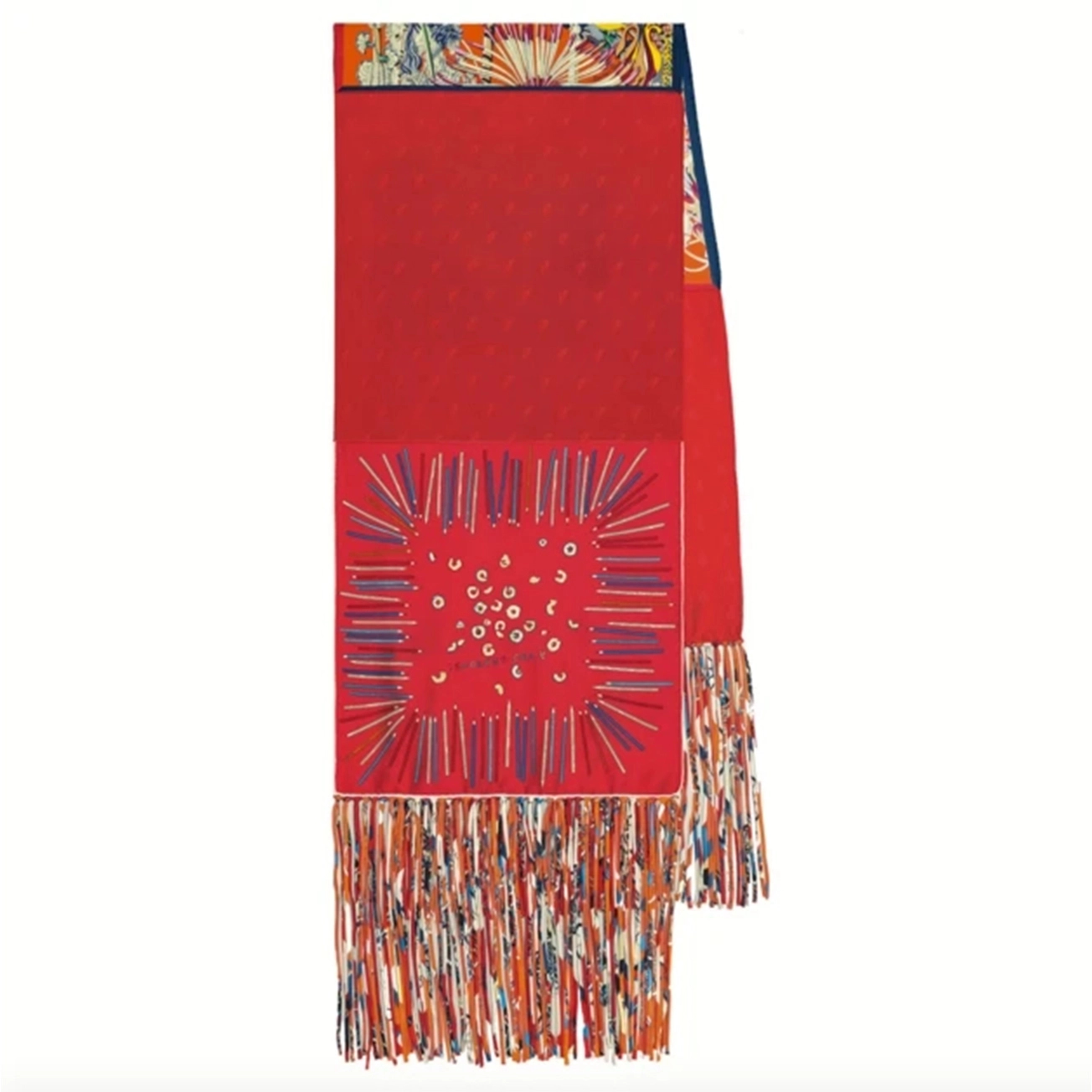
The repurposing and reinvention of designs is one of the fashion brand’s many strengths. This long scarf in plain figured silk has been embellished by the gavroches À vos crayons by Leigh Cooke, an artist who has worked on many of the brand’s scarf designs, and Fantaisie batonique détail by illustrator of children’s books Virginie Jamin, featuring mythical plant beings and three tiny horses hidden in this dreamlike jungle, thus creating a new piece altogether. The printed silk spaghetti fringe has been knotted by hand.